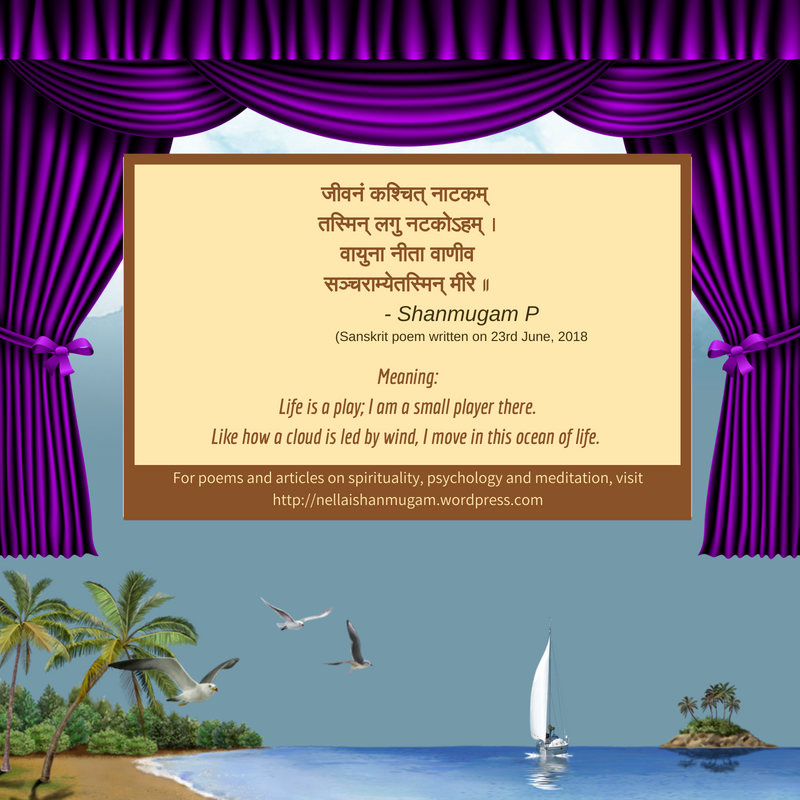First of all, I am sorry about this post. I am a huge fan of Sooryagayathri. But I am not a fan of the modern society which has no clue on how to deal with life. They fall for fake gurus; And sometimes fake gurus and ignorant babas like Jaggi Vasudev create a lot of negative influence in the society. And this negative influence affects great divine artists like Soorya.
I want to ask a question to the Sooryagayathri’s team on the new release ‘Bhairavi Shatakam’.. Who gave this stupid idea? Calm down.. I will explain why this idea is ignorant and stupid.
Another question.. For every video of yours, you have promptly mentioned the author of the lyrics. But you didn’t mention the author of the lyrics for Bhairavi Shatakam. Why? Because, you don’t know.
Let me clarify.. There is nothing called ‘shatakam’ in the first place. Shatkam is a poem that has 6 stanzas. And ashtakam has a poem that has 8 stanzas. Is this clear enough?
Adhi Shankaracharya composed a poem called Rajarajeshwari Ashtakam. It has 8 stanzas. The verses are given below:
अम्बा शाम्भवि चन्द्रमौलिरबलाऽपर्णा उमा पार्वती
काली हैमवती शिवा त्रिनयनी कात्यायनी भैरवी .
सावित्री नवयौवना शुभकरी साम्राज्यलक्ष्मीप्रदा
चिद्रूपी परदेवता भगवती श्रीराजराजेश्वरी .. १..
अम्बा मोहिनि देवता त्रिभुवनी आनन्दसंदायिनी
वाणी पल्लवपाणिवेणुमुरलीगानप्रिया लोलिनी .
कल्याणी उडुराजबिम्ब वदना धूम्राक्षसंहारिणी
चिद्रूपी परदेवता भगवती श्रीराजराजेश्वरी .. २..
अम्बा नूपुररत्नकङ्कणधरी केयूरहारावली
जातीचम्पकवैजयंतिलहरी ग्रैवेयकैराजिता .
वीणावेणु विनोदमण्डितकरा वीरासने संस्थिता
चिद्रूपी परदेवता भगवती श्रीराजराजेश्वरी .. ३..
अम्बा रौद्रिणि भद्रकालि बगला ज्वालामुखी वैष्णवी
ब्रह्माणी त्रिपुरान्तकी सुरनुता देदीप्यमानोज्वला .
चामुण्डा श्रितरक्षपोषजननी दाक्षायणी वल्लवी
चिद्रूपी परदेवता भगवती श्रीराजराजेश्वरी .. ४..
अम्बा शूलधनुः कशाङ्कुशधरी अर्धेन्दुबिम्बाधरी
वाराहीमधुकैटभप्रशमनी वाणी रमासेविता .
मल्लद्यासुरमूकदैत्यमथनी माहेश्वरी चाम्बिका
चिद्रूपी परदेवता भगवती श्रीराजराजेश्वरी .. ५..
अम्बा सृष्टविनाशपालनकरी आर्या विसंशोभिता
गायत्री प्रणवाक्षरामृतरसः पूर्णानुसंधी कृता .
ओङ्कारी विनतासुतार्चितपदा उद्दण्ड दैत्यापहा
चिद्रूपी परदेवता भगवती श्रीराजराजेश्वरी .. ६..
अम्बा शाश्वत आगमादिविनुता आर्या महादेवता
या ब्रह्मादिपिपीलिकान्तजननी या वै जगन्मोहिनी .
या पञ्चप्रणवादिरेफजननी या चित्कला मालिनी
चिद्रूपी परदेवता भगवती श्रीराजराजेश्वरी .. ७..
अम्बापालितभक्तराजदनिशं अम्बाष्टकं यः पठेत्
अम्बालोलकटाक्षवीक्ष ललितं चैश्वर्यमव्याहतम् .
अम्बा पावनमन्त्रराजपठनादन्ते च मोक्षप्रदा
चिद्रूपी परदेवता भगवती श्रीराजराजेश्वरी .. ८.
Isha foundation, a dangerous cult organization that I have been writing about many years in this blog did something interesting.
Linga Bhairavi, is a so called consecrated structure in Isha foundation and in the name of donation for this consecration they collected millions.
They wanted a verse for this Linga Bhairavi, a commercial goddess who can stay in your house if you pay lakhs of rupees for the so called Linga Bhairavi Yantra.
First they removed the 3rd verse and 8th verse from the original Rajarajeshwari Ashtakam composed by Sooryagayathri’s beloved Adhi Shankaracharya. And they changed the verses in the rest of the poem.
In the beginning of each stanza of the original composition, they replaced the word ‘amba’ with the word ‘bhairavi’. Then they replaced the last word ‘Sri Raja rajeshwari’ with ‘Sri Linga Bhairavi’.. How clever?
Dear Sooryagayathri and team,
One question to you. Is it fair to alter the original verse composed by Adhi Shankaracharya for an organization’s commercial purpose? And it is fair to sing this commercial version instead of the original version?
I have not asked an illegal question. So I hope you take this post positively.


